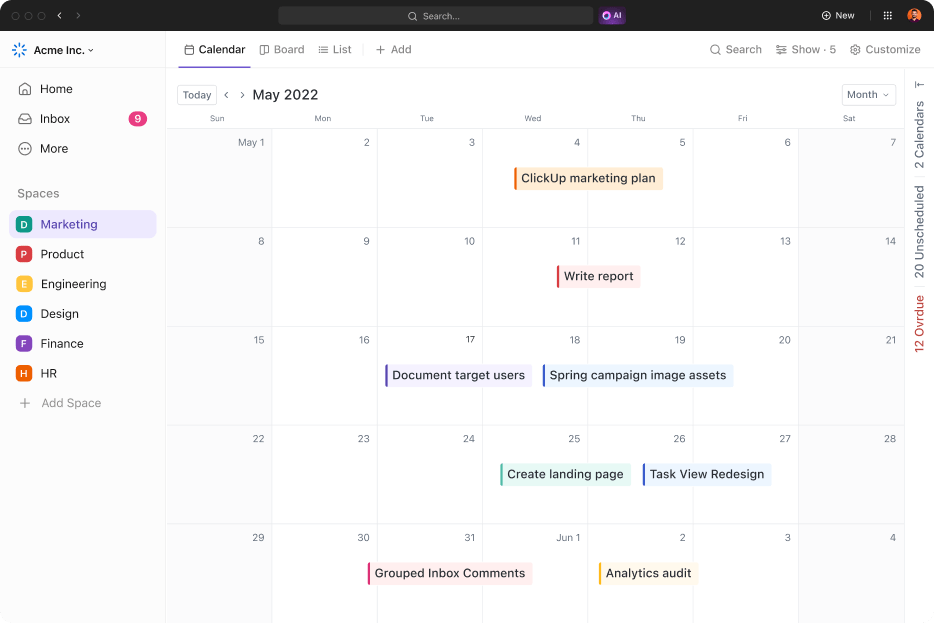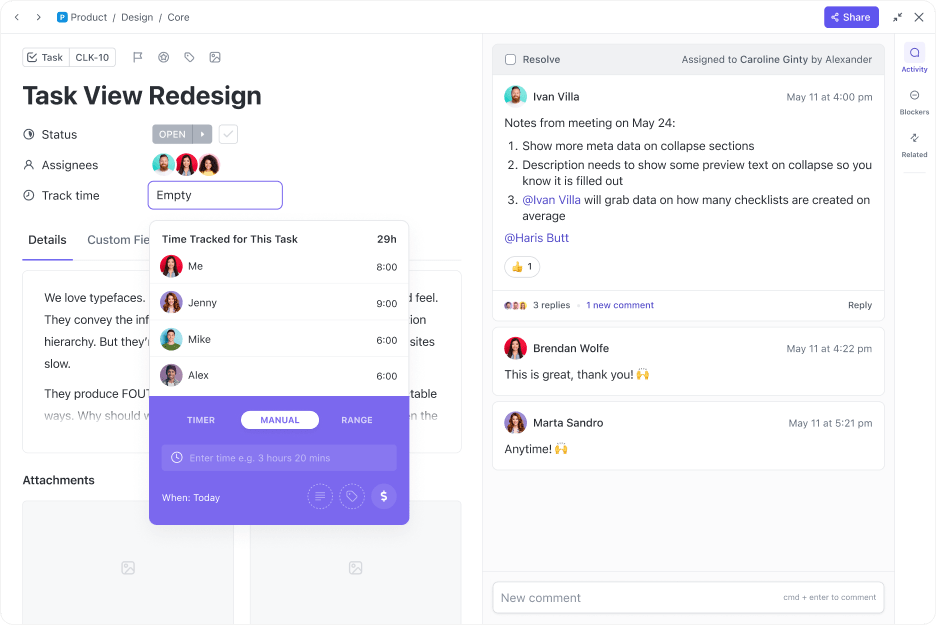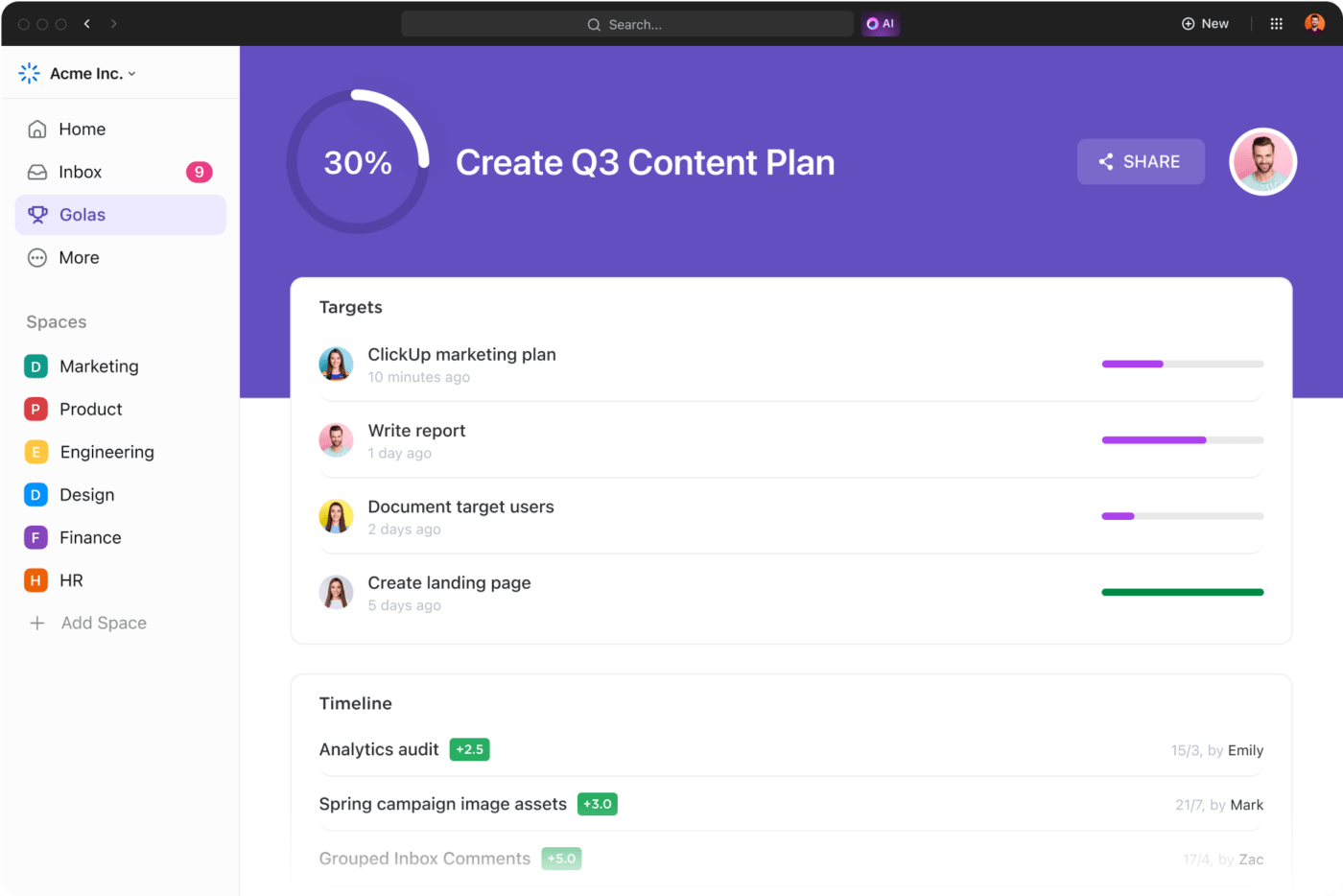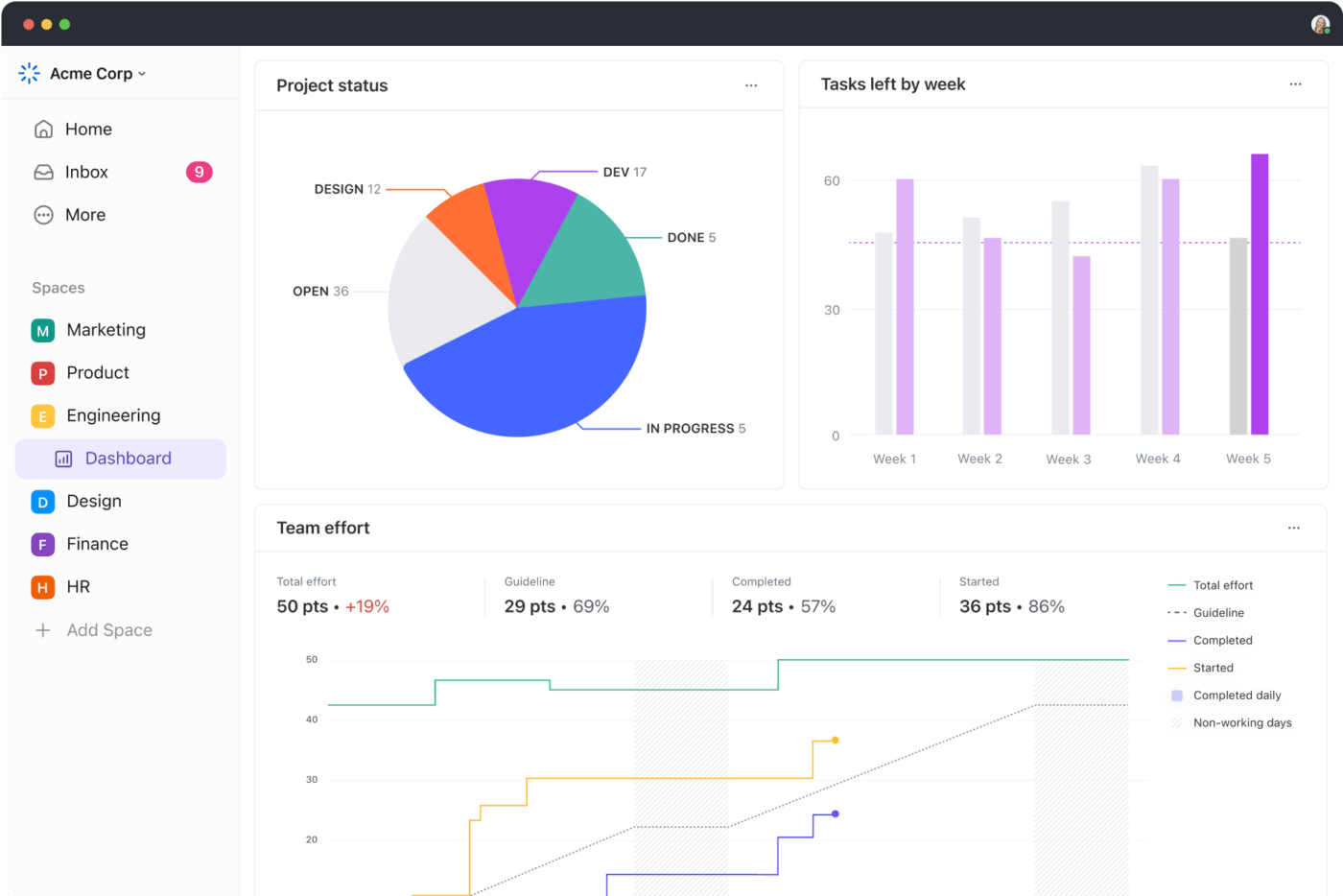How to Make a Routine with ADHD: Tips & Tools

Sorry, there were no results found for “”
Sorry, there were no results found for “”
Sorry, there were no results found for “”
Picture this: you’re running late for a meeting when your laptop dings with a new email from your boss asking for a quick update on a critical issue.
Shifting focus from one task to another becomes difficult, and you feel overwhelmed when routines are disrupted, or plans change unexpectedly. This is a reality for many people living with Attention Deficit Hyperactivity Disorder (ADHD).
It’s not just about being forgetful or easily distracted; ADHD is a neurodevelopmental condition that impacts focus, impulse control, and organization.
In this blog, we’ll learn how to make a routine with ADHD that works for you. Remember, no one size fits all, so pick and choose according to what feels right and works best for you.
Disclaimer: This article provides information on ADHD tools and strategies. It is not intended to substitute professional medical advice, diagnosis, or treatment of ADHD or other health conditions.
For many adults with ADHD, staying focused, organized, and moving to the next task can be a constant struggle.
Here are some common challenges folks may face:
Establishing habits provides a much-needed structure to a scattered attention span, making everyday life more manageable.
Some benefits of habit formation are:
🔍 Did You Know? An important factor in keeping your routine in check when you have ADHD is maintaining a sleep schedule. Poor sleep quality enhances ADHD symptoms, creating a cycle of fatigue and increased difficulty in focusing.
💡Pro Tip: Try habit stacking. Link a new habit to something you already do regularly, and reward yourself for progress. This positive feedback loop keeps ADHD brains engaged and motivated.
Planning a routine might feel like a chore, especially when distractions appear everywhere. But winging it isn’t the answer—things can spiral quickly without structure.
The key is finding strategies that work for your unique needs and integrating them into your daily life.
Let’s explore some practical strategies and tools to help you create and stick to a good routine. 💁
Planning sets the tone for your day and prevents last-minute decision fatigue.
Here’s what to do:
📌 Pin it: A concentration hack is to schedule high-energy tasks for the morning; this is when your focus is sharper. The low-pressure ones can find a place in the evening slot.
ClickUp, the everything app for work, helps you regain control.
From tracking deadlines to breaking down overwhelming projects into bite-sized tasks, this task management software streamlines your workflow and helps you stay on top of everything.
ClickUp Calendar View is a flexible, user-friendly way to visualize your schedule. You can customize the calendar and switch between daily, weekly, or monthly views to see all upcoming tasks and stay prepared.

With its advanced filters and built-in ClickUp Reminders, you can highlight morning routines, work-related tasks, and self-care activities to stay focused.
Drag and drop less demanding activities like laundry or email replies for evenings while blocking the mornings for meetings. You can also share the calendar with your friends and family to enhance accountability.
Want a ready-to-use framework to plan your days effectively?
The ClickUp Daily Planner Template is an excellent tool to help you manage your schedule.
You can create recurring tasks to build habits and set specific due dates to plan out your days, weeks, and months. It lets you categorize tasks into ‘Personal,’ ‘Work,’ or ‘Goals,’ prioritize them based on urgency, and track progress with visuals like graphs and charts.
Large tasks feel overwhelming with ADHD. To avoid procrastination, instead of planning your week in a go, break it down into small, actionable steps every day.
Example: Instead of dedicating eight hours to a project, set smaller, 25-minute daily goals to build momentum.
ClickUp Tasks breaks down complex or time-consuming tasks into smaller steps. Create an individual task for each part of a larger project.
For instance, if you want to ‘organize your house,’ create subtasks like ‘declutter the bedroom,’ ‘clean the kitchen,’ or ‘sort storage boxes.’

You can set custom task statuses such as ‘To Do,’ ‘In Progress,’ and ‘Done’ to track your progress. It also lets you divide each task into subtasks for added specificity. Set priority levels, add descriptions, link related and dependent tasks, and view work in multiple lists with this layered organizational approach.
Furthermore, you can add more granularity to your daily schedule with ClickUp Task Checklists. Create individual to-do lists for ADHD within a task to add finer details.
For instance, within the subtask, ‘Organize the closet,’ you can add a checklist for the following items:
✅ Group clothes by type (e.g., shirts, pants, dresses)
✅ Identify items that need repairs or alterations
✅ Install hooks for bags and scarves
✅ Remove non-clothing items that don’t belong in the closet
You can also create nested checklists so no detail is overlooked.

💡Friendly Reminder: Start small when building a habit. The ‘two-minute rule’ suggests committing to just two minutes, like reading one paragraph of a book every day. This lowers the mental barrier and builds momentum over time.
Keep routines simple to avoid frustration.
Start with one or two habits, like a quick morning jog or a 10-minute evening cleanup. For example, a morning routine could include waking up, planning your day, and meditating for 10 minutes. Once these stick, gradually add steps like a short workout.
💡Pro Tip: Use location-based cues to build daily habits. Keep workout gear by your bed to remind you to exercise, or place a notebook on your desk to prompt journaling.
The oldest trick in the book, ‘Timers,’ is a great way to stay on track. Use them to set boundaries for tasks, like spending 25 minutes writing a project report or 15 minutes cleaning your closet. Timers remind you to transition between tasks and avoid hyper-focusing on one.
The ClickUp Time Management system makes this process smoother. With ClickUp Time Tracking, you can start and stop timers directly within tasks, accounting for every minute. The global timer lets you seamlessly manage time across multiple devices, including desktop, mobile, and web browsers.

Plus, ClickUp’s time estimates let you allocate expected durations for tasks.
For instance, you can set a 30-minute estimate for your morning self-care routine or a 20-minute slot for checking the agendas of the day’s meetings. It gives you a detailed report to analyze where you’re spending your time to help you spot inefficiencies.
Let’s face it: you can’t change your lifestyle overnight. Start small and gradually build your routine over weeks or months. A daily planner app is the best way to proceed with this strategy without missing a beat.
Add one new task to your daily routine at a time. Once you consistently complete it for a few weeks, add another. This gradual approach ensures that your routine is natural.
🤝 Friendly Reminder: Don’t forget to celebrate each milestone, no matter how small, and use positive reinforcement to stay motivated.
ClickUp Automations reinforces and manages your habits by automating repetitive tasks and ensuring consistency.
You can create automations to remind you of tasks at specific times or trigger actions based on certain conditions. For instance, if you’re building an evening routine, set an automation to create a checklist every evening.

You can also use ClickUp Brain, an integrated AI-powered assistant within the ClickUp platform, to get automatic daily progress updates.

For instance, if you’ve established a habit of completing tasks daily, the app analyzes your activity, highlights areas where you’re consistent, and suggests improvements for less-developed habits. You can use this data to understand when you’re ready for new additions to your schedule.
AI in daily life tasks helps you get immediate, real-time feedback to reinforce positive behaviors and let your routine evolve naturally.
Quick prompts to start the day right:
Your environment significantly impacts productivity.
Create designated spaces for work, relaxation, and other activities to minimize distractions, boost focus during work hours, and promote relaxation during downtime.
This separation between personal and professional office space helps maintain clarity and balance.
ClickUp Spaces is a great ADHD productivity tool that creates dedicated work and relaxation areas, making it easy to switch between tasks and unwind. These areas act as broad categories, such as ‘Work’ and ‘Relaxation,’ and let you organize your workflow with custom task statuses and views.

Moreover, ClickUp Folders within Spaces aid further organization, letting you group work tasks based on projects or categorize relaxation activities. This approach sets clear boundaries between professional and personal time.
Routines are about balance. Ensure you make time for self-care, whether exercise, meditation, or a favorite hobby. A well-rested mind is more likely to stick to a new routine and manage ADHD symptoms effectively.

Maintaining motivation and navigating setbacks are essential components of building a sustainable routine.
ADHD often amplifies challenges like task initiation, prioritization, and follow-through, and it’s easy to lose momentum when progress is slow.
Let’s look at some strategies to boost motivation:
🎉 Celebrate small wins early: Accomplish an easy task right after waking up, like making your bed, to create a quick win and build momentum
🔔 Plan microbreaks: Schedule short breaks throughout your day to recharge and maintain consistent energy
💬 Try mirror work: Stand in front of a mirror while looking into your eyes and talk to yourself about what things you’re proud of yourself for self-affirmation
🙏🏻 Create a gratitude checklist: Handwrite a list of ten things you’re grateful for to express gratitude for what you have
🎯 Gamify tasks: Turn the most monotonous and mundane tasks into games or competitions with yourself for better engagement
🔍 Did You Know? Motivation in individuals with ADHD is closely tied to dopamine, a neurotransmitter crucial for reward processing, attention, and drive. Lower dopamine levels make it harder to engage in tasks that lack immediate rewards or excitement.
Setting goals is a crucial part of planning a schedule and maintaining motivation.
ClickUp Goals act as a roadmap, helping you define your goals and providing a clear direction. Without them, it’s easy to lose focus, get distracted by less important tasks, or feel overwhelmed by everything on your plate.

ClickUp, also a goal-tracking app, lets you divide each Goal into ‘Targets’ such as task-based, numerical, true/false, or currency metrics to tailor progress tracking for your needs.
Every small step to reach your goal is tracked and visualized to keep motivation levels high. Assign deadlines and descriptions to your Goals to add clarity and direction, and group them into folders to foster a sense of purpose.
Similarly, ClickUp Dashboards give you a centralized view of your progress, making monitoring tasks, deadlines, and overall progress easy. You can customize it with cards that track goals, task lists, or time reports to create a motivational snapshot of your priorities.

The visual appeal of charts and graphs makes progress tangible, while the ability to track multiple metrics in one place ensures you remain focused on your objectives. Together, Goals and Dashboards create a robust system for staying motivated.
Let’s understand the ‘habit loop for building habits.’
It consists of four interconnected steps: cue, craving, response, and reward.
📌 Pin it: Create links between habits by using existing routines as cues for new ones.
The ClickUp Personal Habit Tracker Template is an excellent tool for forming habits.
You can set personal goals and track progress toward a new habit, track workloads against daily targets, and visualize successes and failures in real time. This means you can channel your energy where needed at all times.
While staying on track is important with ADHD templates, don’t forget to stay resilient even when you face a setback.
You must reflect and learn from the reasons for your setback.
❓Ask yourself, was it due to a lack of preparation, unrealistic goals, or external circumstances? Use these insights to adjust your approach and plan for future challenges.
🧩 Make your routine smaller and more manageable if it’s not working out. For instance, if you miss morning workouts, commit to short 10-minute walks to the nearest coffee shop after lunch.
👥 Share your struggles with friends, family, support groups, or a mental health professional for external encouragement.
Crafting a routine with ADHD is about progress. Small wins, self-compassion, and the right tools can make a difference.
With a positive mindset, actionable insights, and ClickUp, you can create a structure that empowers you daily. You can visualize, track, and celebrate your progress while creating habits that work for you.
What are you waiting for? Sign up on ClickUp for free today.
© 2025 ClickUp